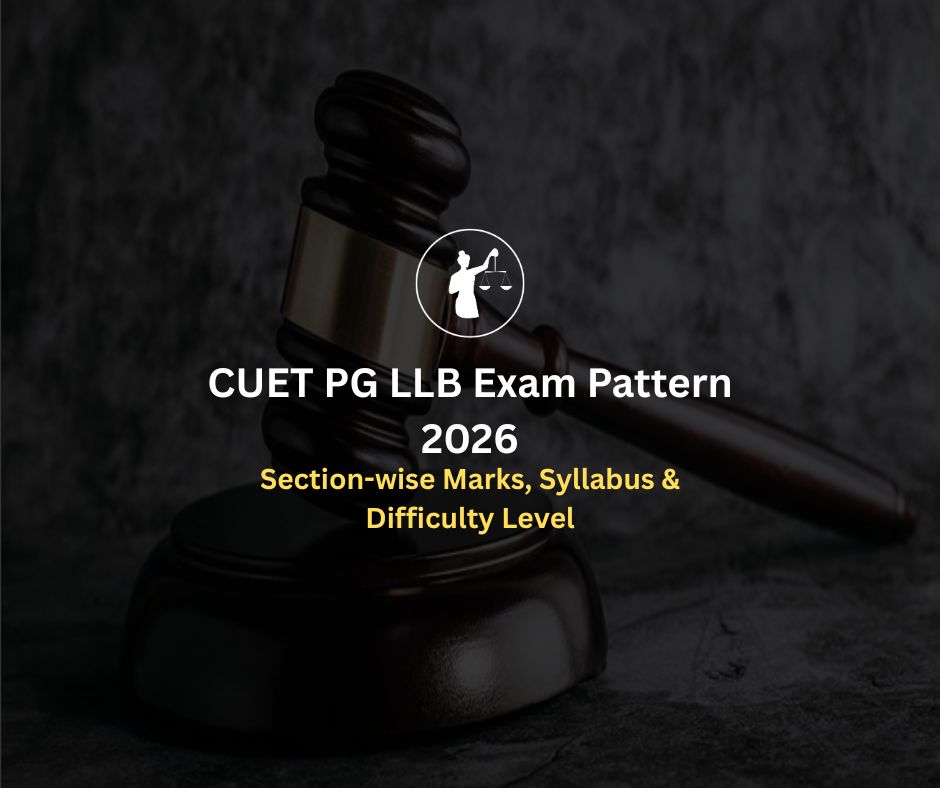
CLAT 2026 requires more than routine practice; it requires precision diagnostics and targeted correction. The shift in exam pattern and higher competition mean aspirants must adopt systems that reveal real ability and fix recurring errors. CLAT 2026 adaptive tests and CLAT personalized feedback together transform preparation from scattershot practice into a closed-loop improvement system. Integrated into modern CLAT online preparation, adaptive testing locates the true ability ceiling while mentor-led personalized feedback prescribes the corrective path. This article explains how adaptive testing works, why personalized feedback matters, and how both together accelerate accuracy, speed, and rank for CLAT 2026 aspirants.
Best CLAT Coaching Online 2026–2027 by NLTI
Exam difficulty, passage density, and inference complexity changed significantly between 2022–2025. Static mocks reproduce a single difficulty band and therefore conceal whether a student fails because of knowledge gaps, timing issues, or decision-making errors. CLAT 2026 adaptive tests vary difficulty in real time, exposing conceptual ceilings and behavioral failure points. Paired with CLAT personalized feedback, adaptive systems convert diagnostic signals into specific practice actions. Reliable CLAT online preparation today is not measured by hours of content but by the quality of diagnostic data and the speed at which that data is used to correct behavior.
Adaptive testing customizes question difficulty based on a candidate’s responses. In the context of CLAT, CLAT 2026 adaptive tests modify passage length, inference depth, and option complexity across Legal Reasoning, Logical Reasoning, and English comprehension. The algorithm escalates complexity when a student answers correctly and scales back to probe the actual boundary when mistakes appear. Unlike fixed mocks, adaptive tests record:
Accuracy across difficulty tiers
Time spent per difficulty band
Decision latency on elimination steps
Fatigue markers across test duration
These data points enable a refined readiness estimate. When adaptive systems are embedded in CLAT online preparation, they provide continuous calibration rather than episodic feedback.
Read More: CLAT 2026: Scoring, Negative Marking, Cutoffs & Tie-Breakers
1. Identifies True Ability Level
CLAT 2026 adaptive tests determine not just how many questions a student answers correctly but which difficulty band they can sustain. This creates a more honest measure of readiness than raw scores from static mocks.
2. Builds Exam Stamina and Pressure Tolerance
Adaptive tests escalate challenge progressively, conditioning students to maintain accuracy under rising cognitive load. That trains stamina, crucial for the second hour of CLAT.
3. Improves Question Selection and Triage Skills
Adaptive exposure forces better decision-making: students learn to identify low-return items quickly. This reduces negative marking, a decisive factor under the CLAT scoring rules.
4. Predicts Rank More Accurately
Because difficulty adapts, simulated percentiles align closer to actual outcomes. CLAT 2026 adaptive tests therefore give more reliable projections for expected cutoffs and rank ranges.
Automated keys show what’s wrong; CLAT personalized feedback shows why. Personalized feedback is mentor-driven, question-level analysis that separates conceptual gaps from behavioral errors. When adaptive tests diagnose the “what,” personalized feedback prescribes the “how,” the specific strategies, remapping of principles, and practice microcycles required to fix recurring mistakes. Effective CLAT online preparation marries both: automated diagnosis via adaptive testing and human corrective input via personalized feedback.
Components of Effective CLAT Personalized Feedback
1. Section-wise Accuracy and Timing
Personalized reports should reveal accuracy vs time maps for each section. This clarifies whether low scores stem from comprehension issues or from poor pacing.
2. Error Pattern Identification
Feedback must classify errors: conceptual, inference, misread, elimination failure, calculation slip, or time-pressure guess. This taxonomy directs targeted drills.
3. Strategy Correction for the Next Mock
Mentors translate errors into tactical changes—adjust section order, enforce per-passage caps, adopt elimination heuristics, or practice specific principle banks.
4. Behavioral Insights
Personalized feedback surfaces non-academic factors, overconfidence, rushing in early passages, and fatigue in later sections, which are as critical to fix as knowledge gaps.
Read More: Free vs. Paid CLAT Online Coaching: What Works Better?
The loop is straightforward: run CLAT 2026 adaptive tests, examine failure patterns, receive CLAT personalized feedback, practice prescribed drills, and retest. This closed loop reduces repetition of the same mistake and shortens the time from diagnosis to corrected habit. The combination accelerates skill transfer from practice to exam conditions, making CLAT online preparation measurable and outcome-driven.
How This Improves Speed, Accuracy, and Rank
When used consistently, the adaptive-feedback loop produces measurable gains:
20–30% improvement in effective reading speed for long legal passages
15% reduction in negative marking through improved triage
Higher stability in Legal and Logical sections under fatigue
Faster recovery in weak zones due to focused remediation
Better conversion of raw marks to percentile because adaptive difficulty aligns with real exam stress
These gains are not hypothetical; 2024–25 cohort analyses show students using adaptive tests plus mentor feedback climbed percentiles faster than peers relying on only fixed mocks.
Treating adaptive tests like conventional mocks without analyzing difficulty-tier data
Ignoring time-trend data that indicates fatigue or pacing collapse
Running adaptive tests too frequently without doing the prescribed feedback drills
Using adaptive tests too early before establishing conceptual basics
Fixes: schedule adaptive tests after a 6–8 week foundation phase, pair every adaptive test with a mentor-led feedback session, and enforce a minimum revision-to-test ratio.
Read More: How to Improve Speed & Accuracy for CLAT 2026
A practical weekly plan:
2 adaptive tests tailored to Legal and Logical sections (simulate increasing difficulty)
1 mentor feedback session focused on error taxonomy and strategy recalibration
3 revision blocks: principle consolidation, elimination drills, reading speed drills
1 accuracy drill: short, timed sets to reduce negative marking
Daily mini-GK adaptive quizzes aligned with recent news cycles
This cycle ensures adaptive diagnosis is always converted into action within the same week, preventing error habit consolidation.
Legal Reasoning: Use adaptive tests that vary principle abstraction; personalized feedback should emphasize mapping facts to principles.
Logical Reasoning: Adaptive tests should mix inference and assumption tiers; feedback must drill premise-conclusion mapping and elimination heuristics.
English Comprehension: Adaptive difficulty should change passage length and syntactic complexity; feedback must focus on main idea distillation and tone recognition.
Quant & DI: Adaptive tests should elevate trap-based DI sets progressively; feedback should enforce approximation heuristics and unit-check discipline.
GK: Adaptive testing for GK should prioritize recall under time pressure; personalized feedback should adjust revision frequency and memory hooks.
Measuring Progress: Metrics That Matter
Accuracy per difficulty band (not just raw score)
Time-per-idea in reading passages
Negative-mark reduction rate
Percentile delta across adaptive cycles
Consistency index (variance of scores across tests)
These metrics, tracked in CLAT online preparation dashboards, show whether personalized interventions are effective.
Read More: CLAT 2026 Section-Wise Strategy for All Subjects
NLTI integrates adaptive testing and mentor feedback into a unified system. Their implementation includes:
Adaptive Legal and Logical tests modeled on recent CLAT difficulty curves
Mentor-led personalized feedback by NLU alumni that translates test data into practice microcycles
Weekly improvement reports mapping percentile movement and fatigue patterns
Personalized progression charts showing gains across 4–8 week cycles
GK Booster integration with adaptive GK quizzes to ensure current affairs readiness under pressure
NLTI’s model demonstrates how CLAT 2026 adaptive tests and CLAT personalized feedback can be operationalized effectively within an online coaching environment.
Read More: Top CLAT Coaching Packages for Every Budget
In pilot cohorts, students who completed a structured adaptive-feedback cycle for eight weeks showed:
Average percentile increase of 8–12 points compared to control groups
Negative-mark incidents reduced by 30% in final month mocks
Higher sustained accuracy in Legal Reasoning under timed conditions
These results illustrate why advanced CLAT online preparation should incorporate both adaptive testing and personalized feedback as core elements.
CLAT 2026 rewards precision under pressure. Static practice no longer suffices. CLAT 2026 adaptive tests diagnose ability and reveal hidden error patterns. CLAT personalized feedback turns diagnosis into action. Integrated within modern CLAT online preparation, this combination accelerates the transition from inconsistent mock scores to reliable percentile performance. For aspirants aiming at top NLUs, adopting an adaptive-feedback cycle is not optional; it is essential.
1. What are CLAT 2026 adaptive tests?
CLAT 2026 adaptive tests adjust question difficulty based on your performance, helping identify real strengths and weaknesses faster than static mocks.
2. How do adaptive tests improve CLAT accuracy?
They expose error patterns by escalating difficulty gradually, allowing you to fix conceptual and inference-based issues with targeted practice.
3. Are adaptive tests better than regular CLAT mocks?
Adaptive tests diagnose deeper learning gaps, while regular mocks simulate the real exam. Using both together gives balanced preparation.
4. What is CLAT personalized feedback?
It is mentor-driven analysis that breaks down your mistakes by accuracy, timing, and question behavior to guide precise correction.
5. How does personalized feedback help in CLAT 2026?
It provides custom strategies to reduce negative marking, optimize timing, and build consistent performance across Legal, Logical, and English sections.
6. How often should I take adaptive CLAT tests?
Two adaptive tests per week with one dedicated feedback session is ideal for measurable improvement.
7. Do adaptive tests help increase CLAT speed?
Yes. They train your brain to manage rising difficulty, improving decision-making and reducing time wasted on non-productive questions.
8. Are adaptive tests useful for beginners?
Yes, but only after a basic foundation is built. Beginners should start with concept learning, then move into adaptive cycles.
9. Can adaptive tests predict CLAT rank accurately?
Adaptive systems mirror varying difficulty levels, giving more realistic percentile predictions than static mocks alone.
10. Do online coaching platforms offer adaptive + personalized systems?
Only select platforms provide both. Students should choose a CLAT online preparation program that integrates adaptive testing with mentor-led feedback for best results.




